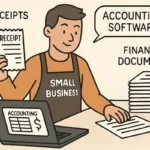Every morning, solo founders wake up wearing a dozen hats: marketer, accountant, designer, customer service rep.
The challenge is not a shortage of ideas, but the sheer weight of execution. Traditional paths require either deep pockets for outside help or long nights learning skills outside their area of expertise.
No-code digital creation offers a third road. It hands the keys of production back to the person who knows the idea best. Instead of wrestling with code or waiting in agency queues, creators drag, drop, and create what they want.
The result is a new kind of freedom where growth is measured not by headcount, but by how quickly an idea can travel from sketch to sale.
Let us find out more about the no-code/low-code revolution.
The Drivers Behind the No-Code Revolution
Earlier, the tech industry felt like a gated community to any non-tech person. This has changed now, with anyone who wants to build something not being constrained by tech knowledge.
This shift towards no-code digital creation is driven by four converging forces.
First, cloud infrastructure has become so reliable and cheap that hosting a site or running a database costs pennies instead of hundreds of dollars.
Second, user-experience designers inside these platforms obsess over simplicity, distilling complex workflows into friendly interfaces that feel more like arranging Lego bricks than programming servers.
Third, the creator economy has exploded, flooding the market with solo founders who demand speed and flexibility over engineering.
The final force is artificial intelligence (AI). It is like an extra teammate who never sleeps, and is capable of drafting headlines, resizing images for mobile, and writing privacy policies while you sip coffee. According to OpenAI CEO Sam Altman, AI will result in a billion-dollar ‘one-person’ company in the coming years.
The economics are staggering: Gartner reports that the low-code platforms market size will reach $16.5 billion by 2027, growing at 16 percent per year. No-code, along with low-code, is the new runway for ideas that need to take off quickly.
Why One-Person Businesses Benefit Most
Solopreneurs juggle everything, marketing, client work, and finances, often with no extra hands. The real hurdle isn’t coming up with ideas but getting them out fast without draining time or cash.
Traditional methods, like hiring experts or learning complex skills, feel out of reach for someone running a one-person show. No-code tools change that, letting creators build and launch quickly with minimal cost.
Let’s take the example of building a website. An agency can charge around two thousand dollars and take six weeks to complete the job. A no-code version can be live for the price of a pizza within a single afternoon.
AI-powered website builders let users input information like business type, tone, and color scheme, and get the rest done. As Hocoos notes, AI handles the heavy lifting, and the creator can focus on the message, customers, and market fit.
The Skill Barrier and Emotional Risks
With no-code and low-code tools, the skill barrier drops even closer to the floor. You still need clarity on what problem you are solving, for whom, and what should happen when they click. But you no longer need to memorize syntax.
No-code also lowers emotional risk and the fear of failure. Since experiments take minutes, not months, founders can try new things without stress. A baker, for example, can build a landing page, test two headlines, and run the better one, all in one day.
Mistakes become quick lessons, not wasted effort, encouraging more tries and faster learning. That means faster action, more lessons learned, and richer experience.
Scaling Without Sacrificing Control
No-code systems let one person serve more clients without surrendering the steering wheel. By automating calendars, invoices, and email nudges, a solo founder can expand capacity while keeping every brand touchpoint personal.
According to McKinsey, agentic AI is further automating workflows, letting users sit back as a set of actions gets automatically done. These digital robots are poised to further scale up startups.
The same plug-in ecosystem links calendars, light CRMs, and simple analytics into one tidy dashboard. As the business grows in reach and revenue, the daily workload stays steady. The best part is that the creator still signs off on every operation.
Be the Creator, Not Just the Visionary
No-code tools and AI have flipped the script. According to Forrester, 87 percent of developers in the enterprise sector already use no-code tools. The survey also highlights that the low-code market can even reach $50 billion by 2028.
The bottleneck is no longer technical skills. It is creative clarity and speed of execution. Creators who master drag-and-drop builders and AI assistants own the entire journey, from first sketch to paying customer, without waiting for permission or budget approval.
The future belongs to makers who can build quickly, adjust often, and stay close to their audience.



